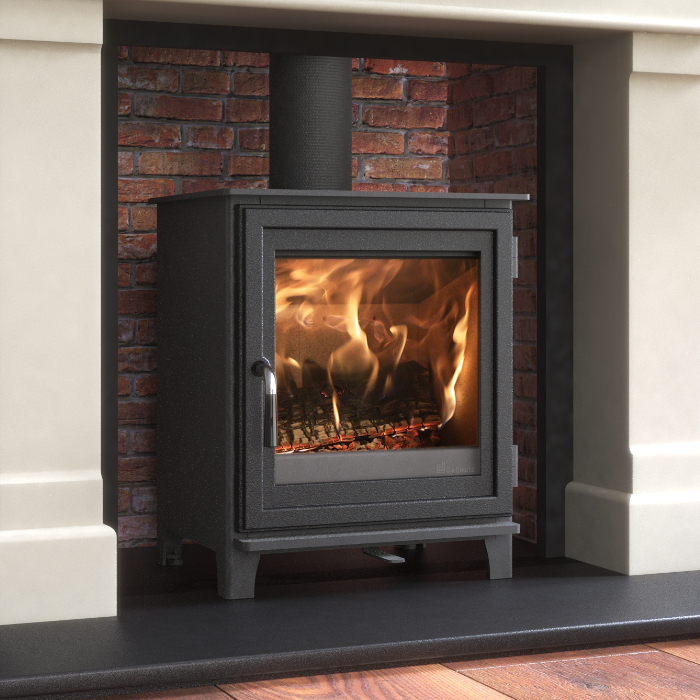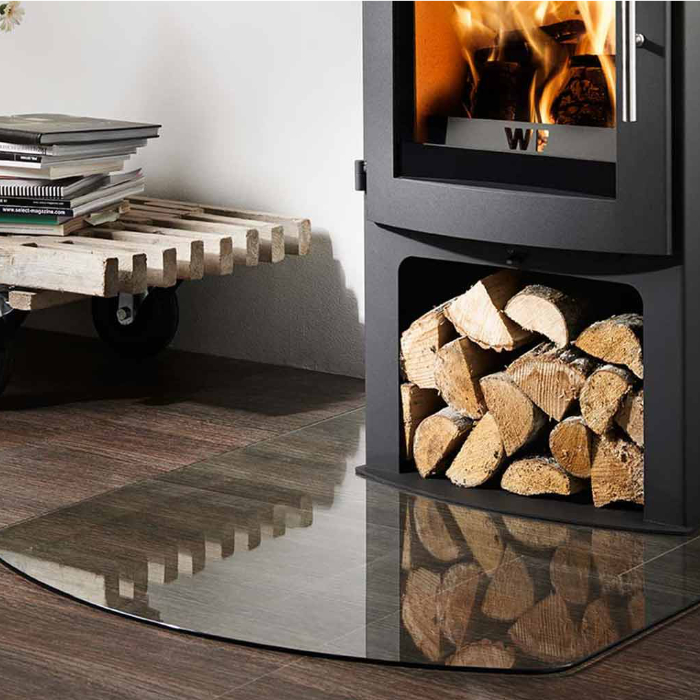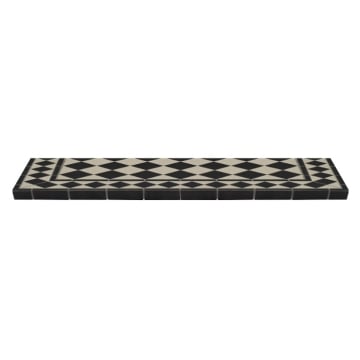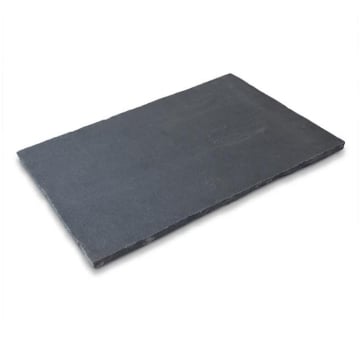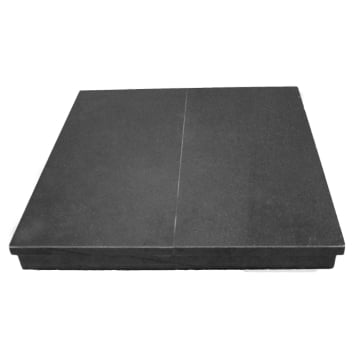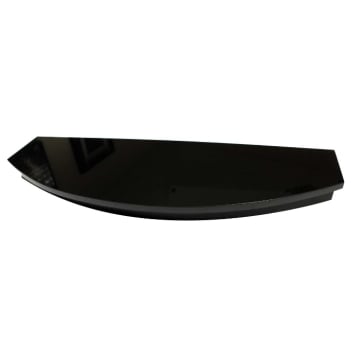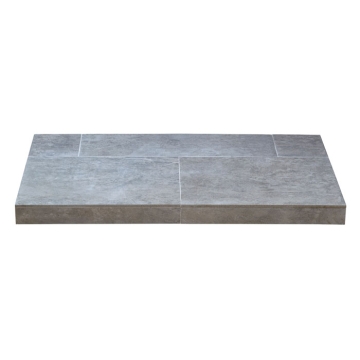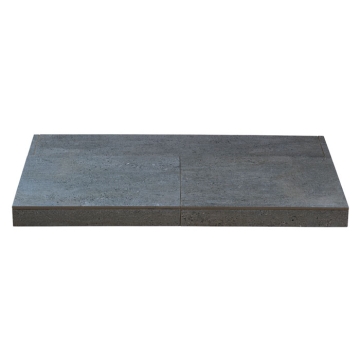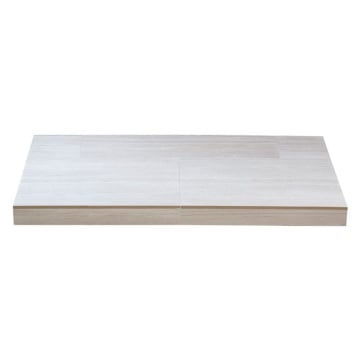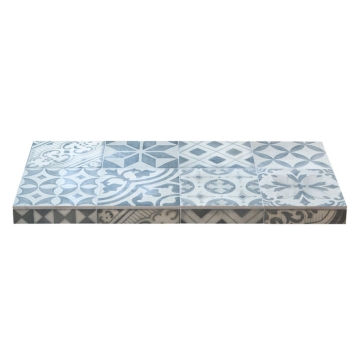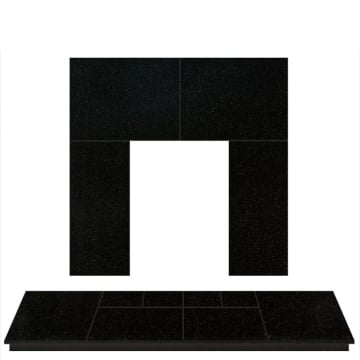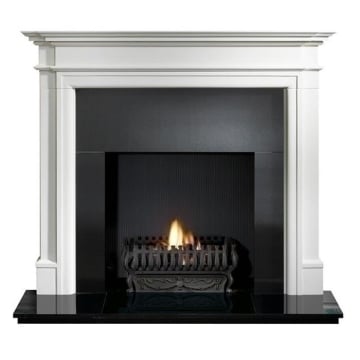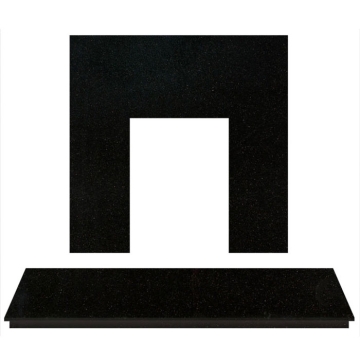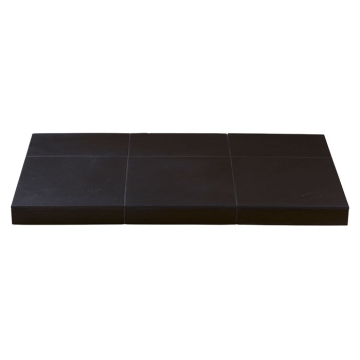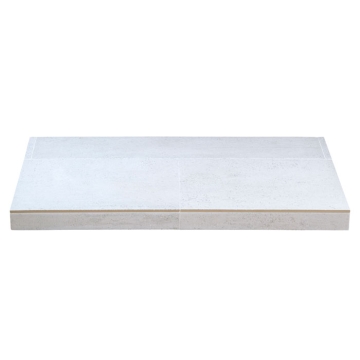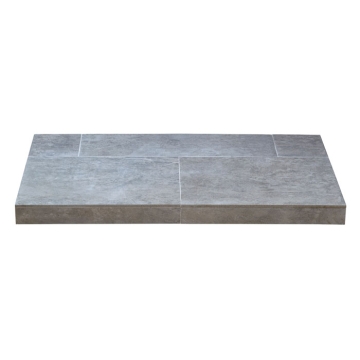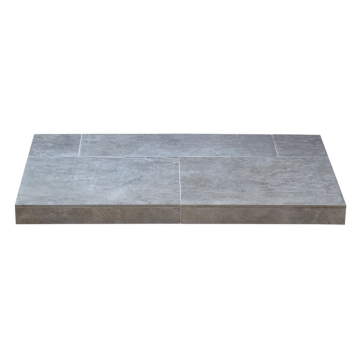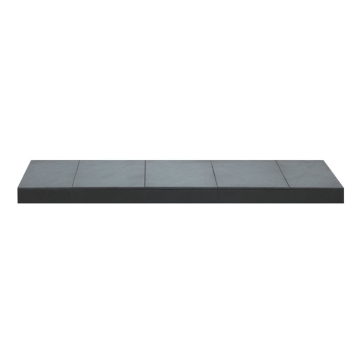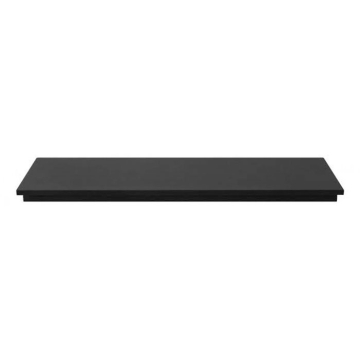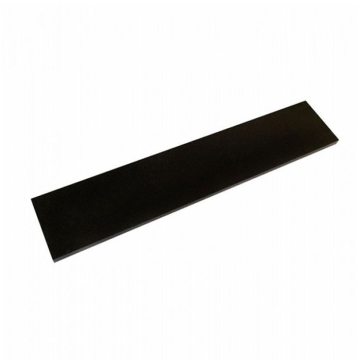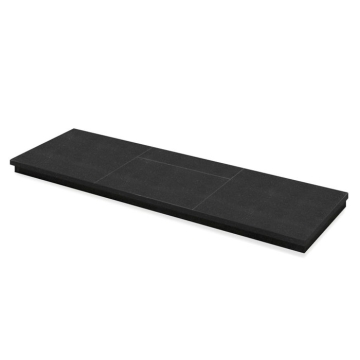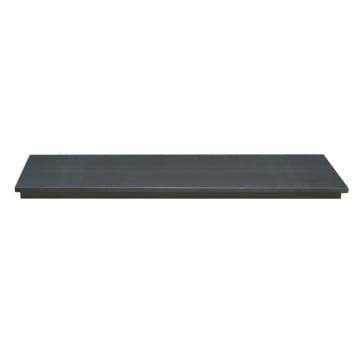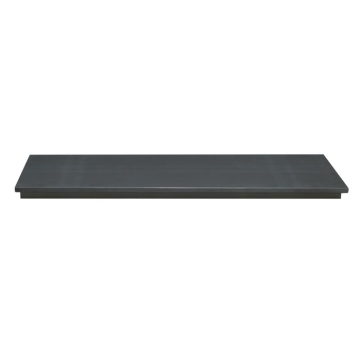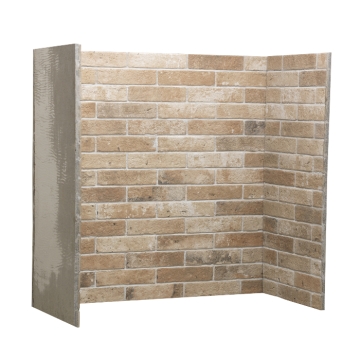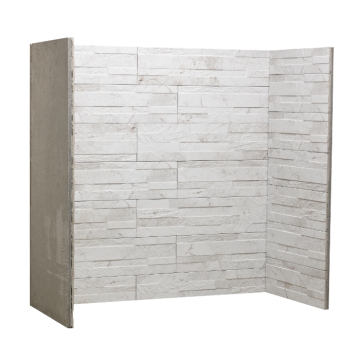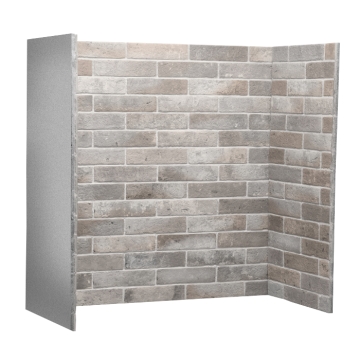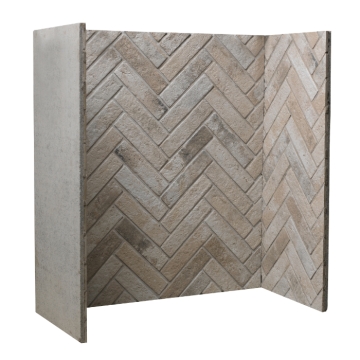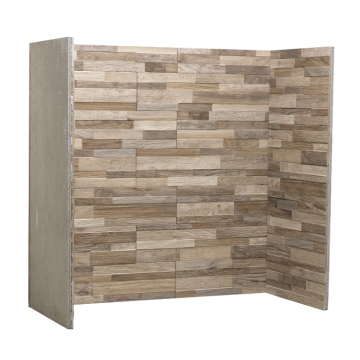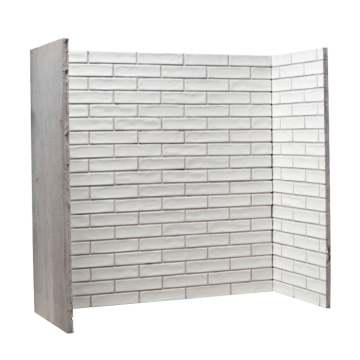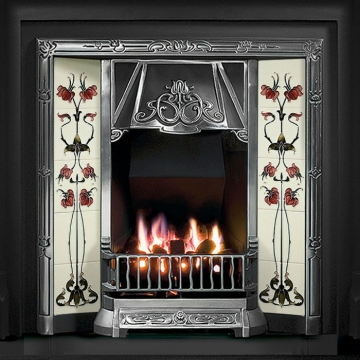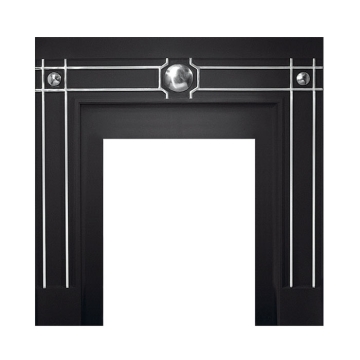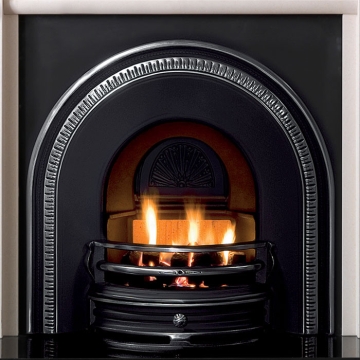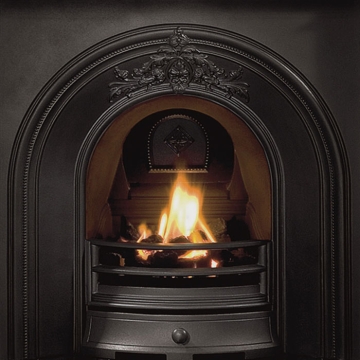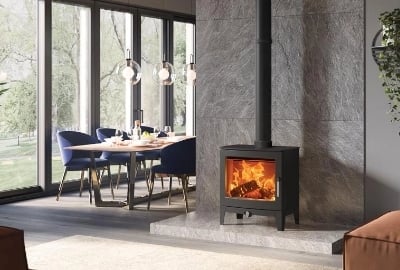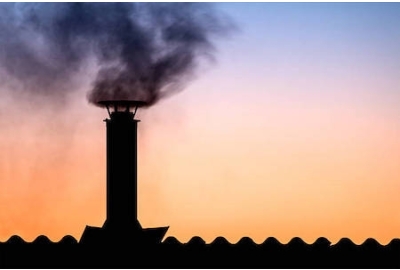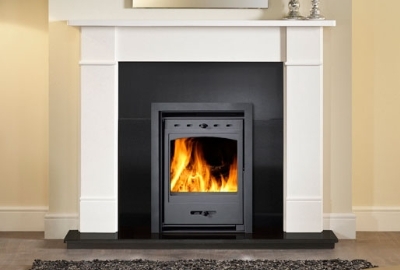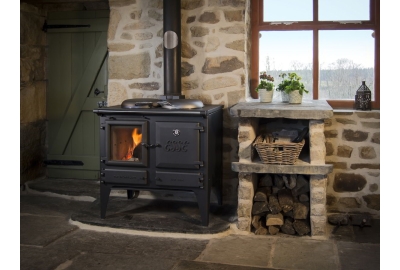Fireplaces and log burner hearths have been around for centuries, they bring an element of style but most importantly safety to your fireplace set-up by helping to protect the area around your stove from overheating. In this edit, we’ll discuss all the important hearth and fireplace regulations to help you choose a suitably sized hearth and the right material for your installation and decor. Keep reading to find out exactly why you’ll need a hearth for your wood burner and all the important regulations involved that you’ll need to know when buying a fireplace hearth for your home.
Contents
What is a fireplace hearth?
Why do I need a hearth for my log burner?
What is the best material to use for a wood stove hearth?
Hearth regulations for a freestanding wood burner
Hearth regulations for stoves in a recess or inglenook
What is the 12mm hearth rule?
What is a fireplace hearth?
A hearth for your fireplace is made of a non-combustible material like granite, stone or glass. The hearth is usually where a log burner or gas fire would sit and it is positioned at the base of your fireplace opening. Your hearth not only provides a fireproof area on which to build but it also adds a stone or textured material to your space that can look incredibly stylish. Building regulations state that a hearth is required for wood or gas-powered fire, it must be made from a non-combustible material to protect the interior flooring from heat and embers. Since electric fireplaces don't have real flames, they don't require a hearth but often have one for decorative purposes.
Why do I need a hearth for my log burner?
When it comes to keeping your home safe a fireplace hearth offers essential heat protection to the area situated around your log burner. Building regulations state that a non-combustible material must be used to cover a set area around your stove, minimum distances required to non-combustible materials should also be detailed within the manufacturer’s instruction manual for your log burner. It is essential that the hearth that you choose is sufficient in size to ensure that any burning fuel or hot embers that fall out of the stove don’t come into contact with soft furnishings like carpets, furniture, rugs or wooden floorboards. We’ll get into the finer details of the building regulations for hearths further in this edit.
What is the best material to use for a wood stove hearth?
The most common and best material used for a stove hearth is stone, especially slate and granite options. For contemporary and freestanding stoves you’ll see lots of hearths made from glass and steel that are great alternatives for a modern or urban twist on your stove installation. All these materials can withstand the very high temperatures that your stove produces when it burns the fuel. We’ve gone into a little more detail about the different hearth materials we’ve already mentioned giving you the pros and cons for each type of hearth.
Granite Hearths - We’d suggest that granite is the most popular and one of the best materials to choose for a solid fuel fire like a wood burner or open fire basket grate. It is a versatile material that is easy to keep clean and dust/ash can easily be removed by simply wiping the hearth with a damp cloth. For stoves and fires that raise the temperature of the hearth above 100°C you’ll need to have your granite hearth cut and slabbed so it can withstand the high temperatures. This simply means that your hearth has to be cut into several pieces and mounted onto a concrete slab which allows for contraction and expansion when the hearth heats and cools down.
Limestone Hearths - Limestone is a highly fire-resistant stone that can absorb heat without cracking. Limestone hearths are not easily damaged by falling embers or ash from the fire, they are a stylish and flexible choice for your stove. You’ll find lots of different types of limestone hearths that are available in lots of different colours, one of the main benefits of a limestone hearth is that they're highly resilient and age well.
Glass Hearths - If you’re looking for a trendy, modern base for your log burner to sit then a glass hearth might be the perfect match for your ultra-modern stove set-up. With completely see-through or smoked glass options available you can achieve a stylish and contemporary look that will provide you with a safety net around your wood burner. The big attraction to glass hearths over other stone products is that they are easy to clean and won’t tarnish over years of use.
Slate Hearths - When it comes to your fireplace hearth slate is a very similar option to granite and this material pairs spectacularly with a log burner or open fire. There a lots of different tones and colours to choose from and the main difference to granite is that your slate hearth will not come highly polished and has more of a dull matte finish. Slate hearths are an ideal match for traditionally styled freestanding stoves but they will also boost the aesthetic of contemporary wood-burning stoves alike.
Steel Hearths - Steel floor plate hearths for wood-burning stoves are made of high-quality steel and have a thickness of 2mm. These hearths will help to protect your flooring from overheating and will help prevent a possible fire in cases where embers or sparks fall from the stove.
Hearth regulations for a freestanding wood burner
If you’re using a Hetas registered installer to fit your wood burner they should be well versed on the regulations that govern the size and type of hearth you’ll need for your stove or fire. One of the first steps when buying a hearth for your log burner is to ensure the size is suitable for not only the space but also the log burner that will sit on top of the hearth. If the heat from your free-standing stove doesn’t raise the temperature of the hearth above 100°C, you’ll need a hearth that extends at least 300mm to the front and 150mm to either side of the appliance. Your hearth must be at least 12mm thick and made from a non-combustible material like the options we’ve previously measured. If your stove is not cool hearth compliant and heats your hearth to over 100°C then it must cover an area of at least 840mm x 840mm and the required thickness of your hearth increases to 250mm.
Hearth regulations for stoves in a recess or inglenook
If you are placing your stove into a fireplace recess then the regulations are different and you’ll need a constructional hearth in place. If you don’t live in a newly built property then it is likely that your constructional hearth is already in place as it is usually built in when the house is constructed. The constructional hearth is effectively the floor of your fireplace and it is made from a layer of 250mm thick concrete. The constructional hearth should project 500mm outwards into your room and be much wider than the internal recess protruding 150mm on either side of the recess. Any combustible materials beneath your recess like floorboards will need a 50mm air gap between them. Once you have worked out that you have a constructional hearth you should still place a decorative non-combustible hearth around the area and ensure that no combustible items are situated within this space. This decorative hearth is also known as the superimposed hearth it sits slightly above the normal floor level and must have a minimum thickness of 12mm. A superimposed hearth must be placed on top of the construction hearth if the stove to be fitted will increase the temperature of the floor above 100°C.
The below diagrams that we have copied from the Building Regulations Document J illustrate the hearth regulations for log burners in both fireplace recesses and free-standing stoves.


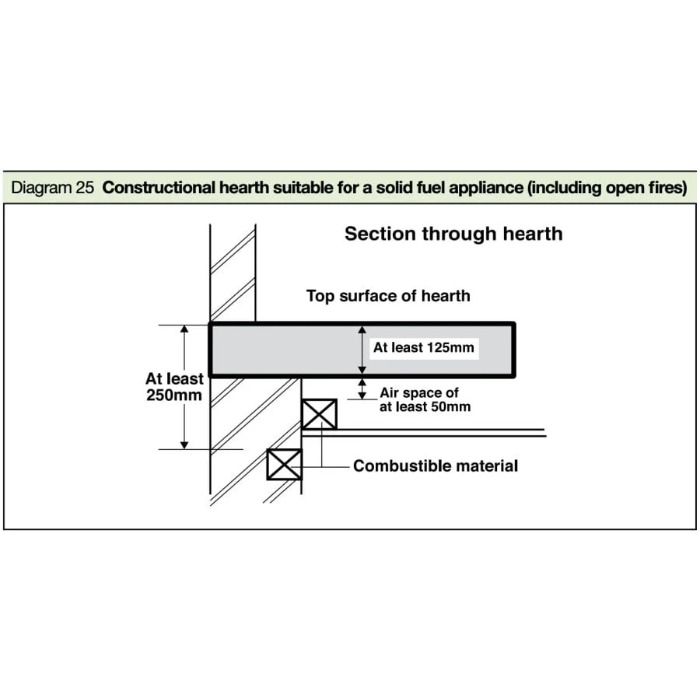

What is the 12mm hearth rule?
Simply put, stoves that will be freestanding and don’t increase the floor temperature to more than 100°C can sit on a 12mm hearth without the need for a constructional hearth. Log burners and multi-fuel stoves that do increase the temperature of the floor by over 100° C (or have not been tested), must stand on a constructional hearth as well as a decorative hearth. There are lots of stove brands that have now been tested by the manufacturers to ensure that they do not increase the temperature of the floor to more than 100°C. This gives you plenty of options for stoves that can simply be installed straight to a minimum 12mm thick non-combustible superimposed hearth, without the need of a constructional hearth.
There are plenty of regulations for you to consider when installing your stove on a suitable hearth. As with every stove installation we recommend that you take advice from a qualified HETAS engineer who will fit your stove and issue you with a certificate of compliance.


